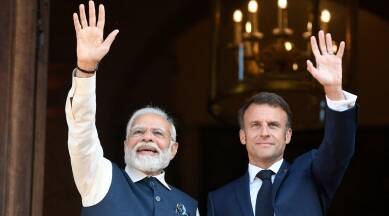Delhi’s timing and approach will build on these partnerships to engage and lead the strategic journey of technological advancements

Prime Minister Narendra Modis recent historical visits to the United States AND France in three weeks they focused on strengthening strategic and economic cooperation in the technology sector. These visits took place against a backdrop of global political and economic instability, particularly due to the war in Ukraine and concerns about China’s rise. As for technology, India’s strengths and resources, its conduct in dealing with management and transfers, and the emerging geopolitics around the sector have given a much-needed boost to the hesitant US bureaucracy and the French establishment. collaborative. They have proceeded to levels of cooperation that would define many aspects of technology use, management and proliferation in the coming years up to 2047, when both of these bilaterals will reach a secular relationship. Engagements during these visits emphasized the importance of technology in global geopolitical alignments along with emerging economic opportunities.
Fieldwork prior to both of these visits was focused. A whole-government approach involving industry and academia has enabled India to engage more optimally in bridging existing technology gaps and paving the way for future partnerships. India’s emerging technology diplomacy has been fully exposed in deliberations as technology is becoming an important area of global geopolitical alignments in addition to emerging economic opportunities. Two areas that stood out in these bilateral engagements were defense technology and the various avenues of the digital technology landscape.
In the defense technology sector, partnerships have expanded, with a focus on military air and naval capabilities. In the United States, a memorandum of understanding was signed between General Electric and Hindustan Aeronautics Limited (HAL) for the production of GE F-414 jet engines in India for the Light Combat Aircraft Mk 2, in technology transfer (TOT) . Additionally, India has purchased 31 HALE MQ-9B UAVs from General Atomics. In France, Safran and DRDO have agreed to jointly develop a military jet engine in India for the Advanced Medium Combat Aircraft (AMCA), and Safran has also agreed to co-develop the engine for the Indian Multi-Role Helicopter (IMRH ) with HAL. Aero engine technology has been a major requirement for India for some time and while the US has only provided TOT, the French have provided India with the Intellectual Property Rights (IP) for the new aero engine. military reaction.
You’ve run out of yours
monthly limit of free stories.
To continue reading,
just register or log in
Read on with an Indian Express Premium Membership starting at Rs 91 per month.
This premium item is free for now.
Register to read more free stories and access partner offers.
Read on with an Indian Express Premium Membership starting at Rs 91 per month.
This content is exclusive to our subscribers.
Subscribe now for unlimited access to exclusive and premium stories from The Indian Express.
Digital technology was another key area of interest. Discussions and agreements covered cybersecurity, artificial intelligence (AI), quantum computing (QC), semiconductors and high performance computing (HPC). The Indo-US iCET initiative, unveiled earlier this year by both national security advisers, formed the basis for discussions, while a memorandum of understanding on cooperation in digital technologies was signed between the Ministry of Electronics and Information Technology (MeitY) and the French Ministry of Economy based on the Indo-French Roadmap on Cyber Security and Digital Technology adopted in 2019. The agreements aim to promote cooperation in semiconductor capacity building in India as stipulated by the National Semiconductor Mission (NSM), developing AI and quality control systems and establishing norms for global cooperation. India’s current leadership of the 25-nation Global Partnership for AI (GPAI) was appreciated by both the US and France and they offered their support for India to take a role in promoting responsible AI in the face of growing concerns for the existential threats it poses. The establishment of a joint Indo-US quantum coordination mechanism to facilitate collaboration between industry, academia and government is a very important step.
Cooperation on cybersecurity, protecting critical infrastructure and promoting cybersecurity education and skills are also an important part of the cooperation that builds on the current capacity building efforts. India’s focus on public digital infrastructure (DPI) and its potential to reduce the global digital divide is another avenue that both the US and France have agreed to support.
It is also pertinent to note that defense technology and many aspects of strategic digital technology have been the focus of convergence and their force-multiplying effect is concerning. Over the past two decades, defense capabilities have transformed with the fusion of digital technologies into equipment that until now operated on electromagnetic and kinetic forces. Artificial intelligence and quality control have become enablers for equipment and systems, while cyberattacks and surveillance activities using this technology are becoming more prevalent.
The timing and approach is right for India to build on these partnerships to engage and lead the strategic journey of technological advancements in the coming years. For this, greater field capacity will be a better enabler.
The writer is a computer security analyst
First published on: 2023-07-17 at 16:03 CEST
#Jet #Engines #Artificial #Intelligence #Quantum #Computing #Seeds #Future #Tech #Diplomacy #France #United #States
Image Source : indianexpress.com
